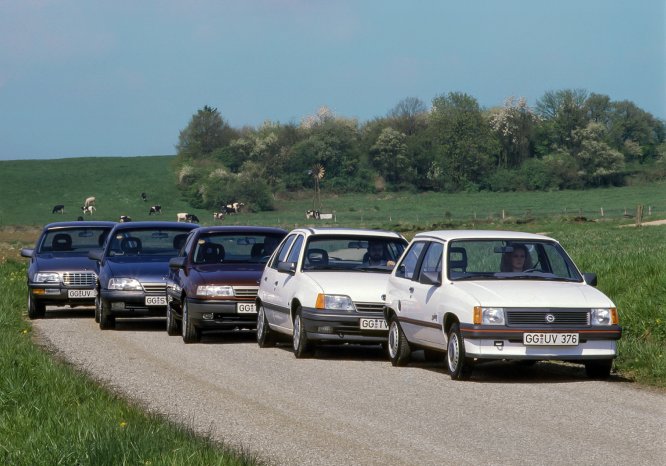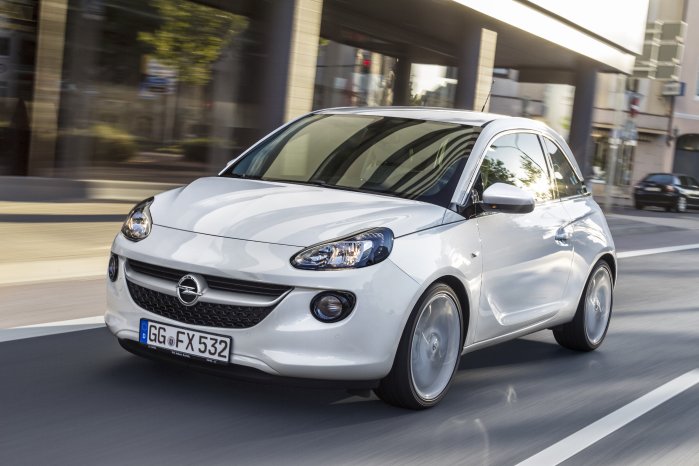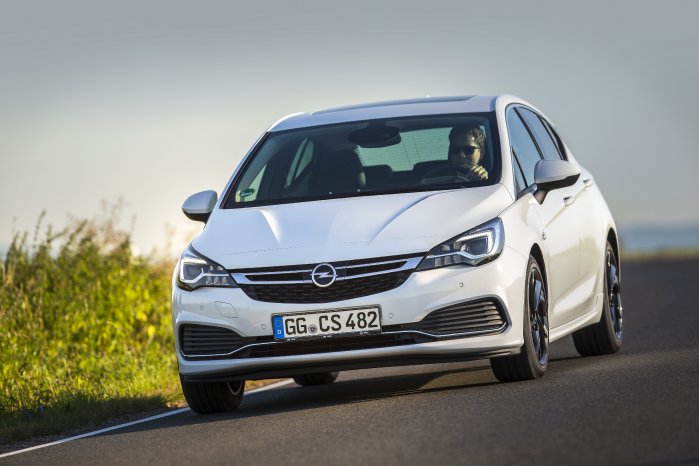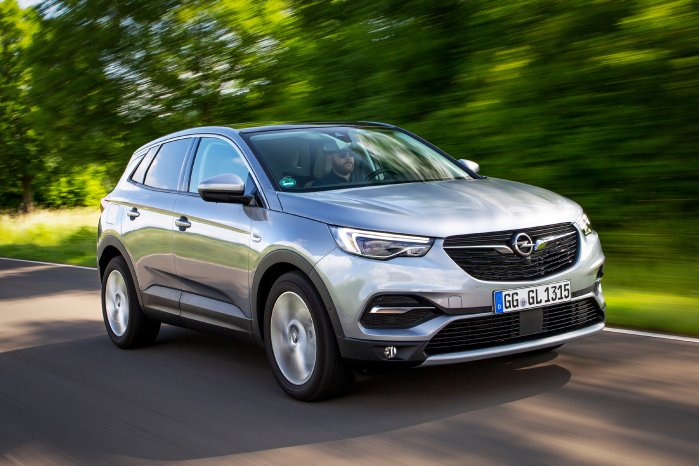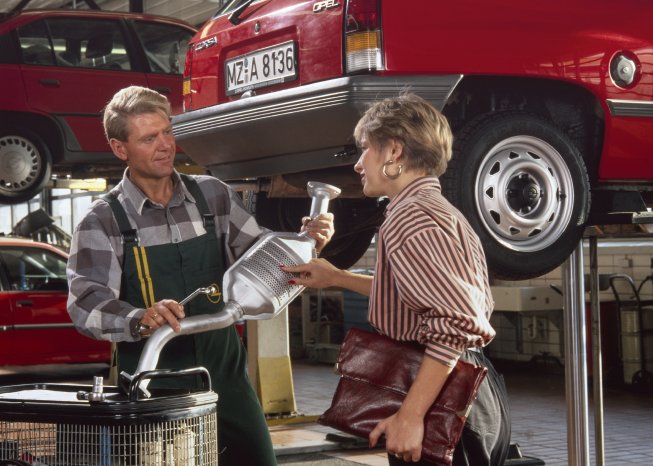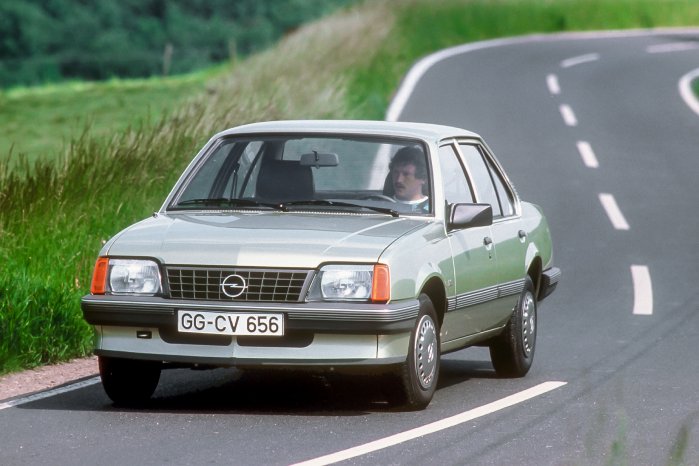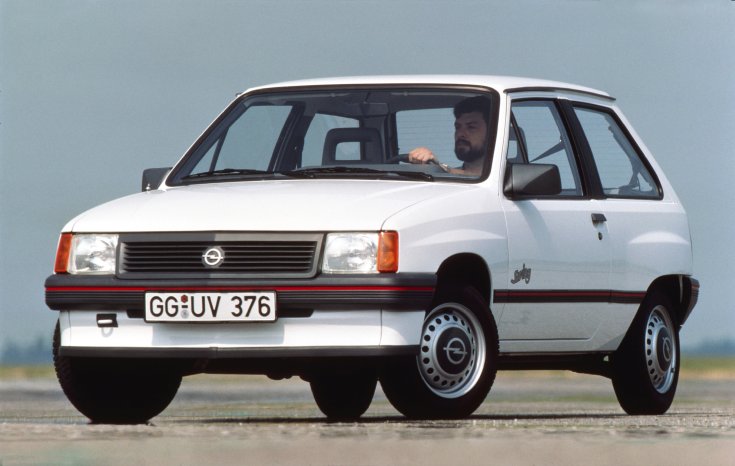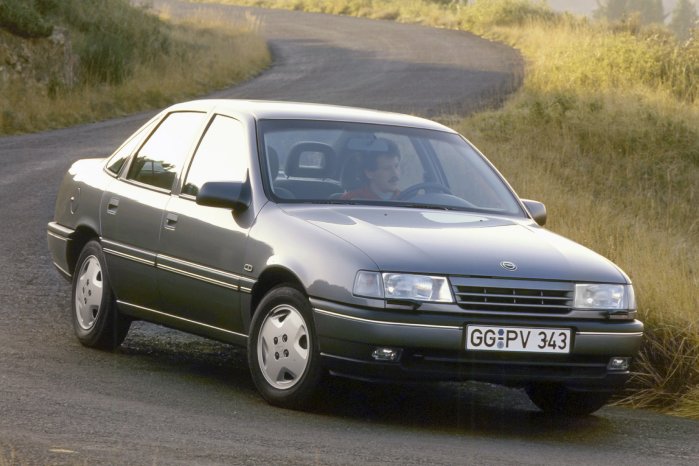- From Corsa to Senator: Three-way catalytic converter on every model
- Pro-environmental investment: DM 1.0 billion for new test facilities and equipment
- Opel Ascona 1.8i: First German car with catalytic converter especially for Europe
- Today: All Opel passenger cars meet strict EURO 6d-TEMP emissions standard
But true to the entrepreneurial motto, “do the unexpected”, Opel went even further: in order to make it easier for customers to buy a car with the climate-friendly technology, the company also lowered prices for many models.
Opel continues to take its responsibility for the environment seriously today. All current Opel passenger cars already meet the strict Euro 6d-TEMP emissions standard; and on the eve of the breakthrough for electric mobility, the carmaker is now putting the finishing touches to two of its next big steps towards sustainable mobility: the Grandland X as plug-in hybrid electric vehicle and the battery-powered version of the next-generation Corsa. Opel will open the order banks for both cars later this year. Every European Opel passenger car model will have an electrified version by 2024.
From Corsa to Senator: Three-way catalytic converter on every model
March 1988: with 20,451 units, Opel has established itself as the leader in new registrations of cars with three-way catalytic converters in Germany. By the end of the year the number had increased to 208,000. The amount of Opel cars equipped with catalytic converters rose again in early 1989 following the introduction of the Vectra, which Opel offered with the three-way catalytic converter as standard right from the start of sales.
The automotive engineering community at the time was convinced that there was no alternative to the three-way catalytic converter if exhaust emissions were to be reduced as much as possible. While the three-way converter removed around 90 per cent of the emissions, it was only about 50 per cent with a conventional two-way converter or 60 percent with a lean-burn engine. The three-way converter performed even better when it came to nitrogen oxides, with a reduction of 90 percent.
Opel’s smallest car with three-way catalytic converter in 1989 was the Corsa, fitted as standard with a 44kW (60hp) 1.3-litre fuel-injection engine. Then came the 1.3-litre Kadett in the compact class, while the midsize Vectra featured not only a 55kW (75hp) 1.6-litre base engine, but also an 85kW (115hp) 2.0-litre power unit.
In the upper midsize class, the Omega was equipped as standard with the 85kW (115hp) 2.0 engine. The top-of-the-line model with three-way catalytic converter was the Senator. The Opel flagship was available with two 3.0-litre, in-line six-cylinder engines that produced 115kW (156hp) and 130kW (177hp) respectively.
Offering the three-way catalytic converter as standard across the range was the provisional climax of an environmental offensive that Opel had started five years before.
Exemplary behaviour: Opel shows responsibility for environmental protection
In the early 1980s, a discussion about acid rain and dying forests took hold in Germany. Emissions of nitrogen oxides were identified as a contributory factor. Road traffic, as well as industry, was seen as a cause.
Opel immediately recognised its responsibility for the protection of the environment and committed more than one billion Deutsche Mark (DM), as well as hundreds of engineers, to the development of catalytic converters.
Opel invested DM 100 million alone in new test rigs and test equipment for durability and high-speed testing. The new facilities included a 13-storey-high “soak tower”. In this insulated building, more than 130 cars could be prepared simultaneously for emissions testing. The legal standards required that, before the emissions test, each car had to be stored for at least 12 hours at a temperature of 20 to 25 degrees Celsius.
Initially, most catalytic converters in Europe were just modifications of the U.S. version. But with the introduction of the Ascona 1.8i in early 1985, Opel was the first German manufacturer to bring a model onto the market with a catalytic converter that was specially developed for European conditions. The first example actually produced was delivered to the Rhineland-Palatinate police force.
Environmental offensive: Catalytic converter at no extra cost
The environmental offensive continued the following autumn, when Opel presented the first European small car with three-way catalytic converter, the Corsa 1.3i. In 1986, the carmaker offered the new Omega at no additional cost for the catalytic converter. The launches of the Senator (1987) and the Vectra (1988) followed the same strategy. Additionally, all Opel cars with three-way catalytic converter were equipped with active carbon filters for capturing hydrocarbons that escaped from the fuel tank.
Further information about official fuel consumption, official specific CO2 emissions and consumption of electric energy can be found in the “guideline about fuel consumption, CO2 Emissions and electric energy consumption of new passenger cars” ('Leitfaden über den Kraftstoffverbrauch, die CO2-Emissionen und den Stromverbrauch neuer Personenkraftwagen') in German language, which is available free of charge at any point of sales and at DAT Deutsche Automobil Treuhand GmbH, Helmuth-Hirth-Straße 1, D-73760 Ostfildern.
